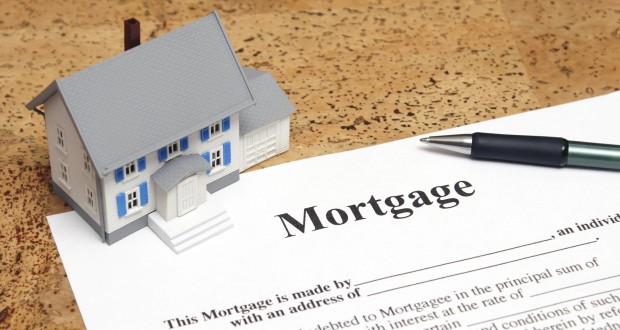Buying a home is one of the biggest financial decisions you’ll ever make. But unless you’re paying in cash, you’ll likely need a home loan (also called a mortgage) to finance your purchase.
With so many types of home loans available, choosing the right one can be confusing. Each loan has different terms, interest rates, and requirements. Picking the wrong one could cost you thousands of dollars extra over time.
In this guide, we’ll break down the most common types of home loans in simple terms so you can make the best choice for your situation.
1. Conventional Loans
What is a conventional loan?
A conventional loan is a mortgage that isn’t backed by the government. Instead, private lenders (like banks and credit unions) provide these loans, and they follow guidelines set by Fannie Mae and Freddie Mac—two government-sponsored companies that buy mortgages from lenders.
Key Features:
- Down Payment: Typically 3% to 20% of the home’s price.
- Credit Score Requirement: Usually 620 or higher.
- Mortgage Insurance: Required if your down payment is less than 20%.
- Loan Limits: Up to $766,550 (for 2024) in most areas, but higher in expensive cities.
Best For: Buyers with good credit and stable income who can afford a down payment.
2. FHA Loans (Federal Housing Administration Loans)
What is an FHA loan?
An FHA loan is insured by the Federal Housing Administration, making it easier for people with lower credit scores or smaller down payments to qualify.
Key Features:
- Down Payment: As low as 3.5%.
- Credit Score Requirement: 580+ for 3.5% down; 500-579 with 10% down.
- Mortgage Insurance: Required (upfront and annual premiums).
- Loan Limits: Varies by location but generally lower than conventional loans.
Best For: First-time homebuyers, those with lower credit scores, or buyers who can’t afford a large down payment.
3. VA Loans (Veterans Affairs Loans)
What is a VA loan?
A VA loan is a mortgage guaranteed by the U.S. Department of Veterans Affairs, available to active-duty military members, veterans, and eligible spouses.
Key Features:
- Down Payment: 0% down payment required.
- Credit Score Requirement: Varies by lender but often 620+.
- Mortgage Insurance: Not required (a big advantage!).
- Funding Fee: A one-time fee (can be rolled into the loan).
Best For: Military service members, veterans, and their families.
4. USDA Loans (U.S. Department of Agriculture Loans)
What is a USDA loan?
A USDA loan helps low-to-moderate-income buyers purchase homes in rural areas. It’s backed by the U.S. Department of Agriculture.
Key Features:
- Down Payment: 0% down payment.
- Credit Score Requirement: Usually 640+, but some lenders accept lower.
- Income Limits: Must meet income requirements for your area.
- Property Location: Must be in a USDA-eligible rural area.
Best For: Buyers with lower incomes looking for homes in rural or suburban areas.
5. Jumbo Loans
What is a jumbo loan?
A jumbo loan is for expensive homes that exceed the conventional loan limits (over $766,550 in most areas in 2024).
Key Features:
- Down Payment: Usually 10% to 20% or more.
- Credit Score Requirement: 700+ typically.
- Strict Approval Process: Lenders require strong income and assets.
- Higher Interest Rates: Often slightly higher than conventional loans.
Best For: Buyers purchasing luxury homes or properties in high-cost cities.
6. Fixed-Rate Mortgages
What is a fixed-rate mortgage?
A fixed-rate mortgage has an interest rate that stays the same for the entire loan term (usually 15 or 30 years).
Key Features:
- Predictable Payments: Your monthly payment never changes.
- Long-Term Stability: Good for buyers planning to stay in the home for many years.
- Higher Initial Rates: Usually starts higher than adjustable-rate loans.
Best For: Buyers who want stable, long-term payments.
7. Adjustable-Rate Mortgages (ARMs)
What is an ARM?
An adjustable-rate mortgage (ARM) has an interest rate that changes over time, usually after an initial fixed period (like 5, 7, or 10 years).
Key Features:
- Lower Initial Rates: Starts lower than fixed-rate loans.
- Rate Adjustments: Changes based on market conditions (can go up or down).
- Risk of Higher Payments: Payments can increase significantly.
Best For: Buyers who plan to sell or refinance before the rate adjusts.
8. Interest-Only Loans
What is an interest-only loan?
With this loan, you only pay the interest for a set period (usually 5-10 years), after which you start paying both principal and interest.
Key Features:
- Lower Initial Payments: Payments are smaller at first.
- Higher Later Payments: Payments jump after the interest-only period.
- Riskier: You don’t build equity during the interest-only phase.
Best For: Buyers with irregular income (like commission-based workers) or those who expect higher earnings later.
9. Reverse Mortgages
What is a reverse mortgage?
A reverse mortgage lets homeowners aged 62+ convert home equity into cash without selling the home. The loan is repaid when the homeowner moves out or passes away.
Key Features:
- No Monthly Payments: The lender pays you (lump sum, monthly, or line of credit).
- Loan Repayment: Due when the home is sold or the borrower dies.
- Fees & Interest: Can be expensive over time.
Best For: Seniors who need extra income and want to stay in their homes.
Which Home Loan Is Right for You?
Choosing the best home loan depends on:
✅ Your credit score – Higher scores get better rates.
✅ Your down payment – Some loans require little or no down payment.
✅ Your income & debt – Lenders check if you can afford payments.
✅ How long you’ll stay in the home – Fixed vs. adjustable rates matter.
✅ Location of the home – Some loans are for rural or high-cost areas.
Final Tips:
- Compare multiple lenders to get the best rate.
- Improve your credit score before applying.
- Save for a down payment to avoid extra fees.
- Talk to a mortgage expert if you’re unsure.
Conclusion
Understanding the different types of home loans helps you make a smart decision. Whether you’re a first-time buyer, a veteran, or looking for a jumbo loan, there’s an option for you. Take your time, research, and choose the loan that fits your financial situation best.


